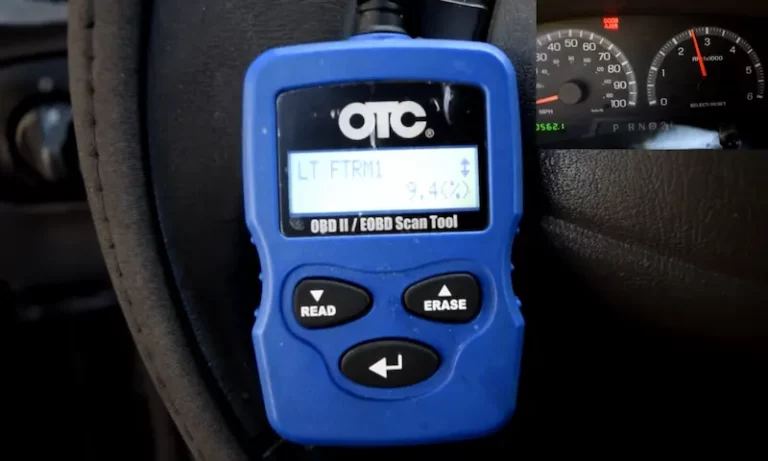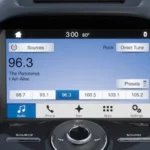A long-term fuel trim stuck at 25% is simply an engine that is running rich. It means that too much fuel is going into the engine due to issues with sensors or other important components.
When the LTFT is stuck at 25%, it has some obvious symptoms like reduced engine output, increased fuel consumption, fuel smell within the vehicle, and more.
The severity of the symptoms stresses the importance of fixing this problem. This article will examine the meaning of Long Term Fuel Trim Stuck at 25% and its causes. Also, we will look at some symptoms peculiar to this problem and recommend some fixes.
What is Long Term Fuel Trim Stuck AT 25%?
A Long Term Trim Stuck at 25% means more fuel is going into the cylinder air mass. Several things, including a faulty oxygen sensor, a vacuum leak, and a leak in the MAF and intake, can cause this issue.
LTFT is the sum of what the vehicle’s computer system has been doing to ensure the balance of the air-fuel mixture within a particular period.
An LTFT is usually expressed in percentage, ranging from -10% to +10%. LTFT gets its value based on the short-term fuel trim (STFT) activity over some time. While the LTFT has a longer response time, the STFT quickly responds to rich or lean conditions by the fuel monitor.
The normal LTFT value should range between -10% and +10%. If the value exceeds ±10%, there is an issue, and the engine may run lean or rich. In most cases, the cause of the issue is faulty sensors.
When the LTFT is stuck at 25%, it shows that the engine is running rich, meaning more fuel is going into the engine combustion system. This could lead to many issues with the engine if the problem is not checked and fixed immediately.
Once the vehicle’s computer system senses that the engine is running, error codes will be triggered, as well as other warnings, to ensure that the driver is notified.
Causes of Fuel Trim Stuck AT 25%
Below are some of the causes of an LTFT stuck at 25%.
1. Damaged oxygen sensor
The oxygen sensor is responsible for monitoring the amount of oxygen in the exhaust gas and then sensing the information to the computer system for appropriate air-fuel ratio adjustment.
When the sensor is damaged, it sends inaccurate data about the unburned oxygen in the exhaust to the ECU. Once this happens, the ECU could send more fuel to the engine system when needed; this will cause the engine to run rich.
2. Faulty mass airflow sensor
The mass airflow is used to determine the amount of air going into the engine. The sensor’s information is then sent to the ECU, which it then uses to adjust the air-fuel ratio.
Once the mass airflow is faulty, wrong information will be sent to the ECU about the air going to the engine. It influences the ECU to send more fuel into the engine when it is not needed, which then causes the engine to run rich.
3. Faulty ECU
The ECU controls the fuel system, as it determines the amount of fuel that will go into the engine based on various inputs by sensors. However, when the ECU is malfunctioning, it could send in the wrong commands, allowing more fuel to be sent to the engine system.
A malfunctioning ECU could be caused by several factors, including software issues, damaged modules, and modifications done on vehicle parts.
4. Damaged injector
The ECU uses the injector to regulate the amount of fuel that goes into the engine combustion system. If the injector is damaged, the injector could be stuck on open, which allows more fuel to flow into the engine combustion chamber.
Once the injector is stuck on open, the ECU cannot regulate the fuel going to the engine, leading to the engine running rich.
5. Dirty or clogged air filter
If the air filter is dirty or clogged, it reduces the amount of air that goes into the engine system. In turn, the ECU will be forced to increase the fuel going to the engine to cope with the vehicle’s power needs.
6. Faulty intake temperature sensor
Another reason that the engine might run rich is due to a faulty intake temperature sensor. The intake-air temperature sensor monitors the temperature in the suction pipe, and then information is sent to the ECU in electrical signals.
Once the intake temperature sensor is damaged, information obtained from the sensor will be inaccurate. This will affect the air-fuel mixture because the information obtained from the sensor is vital in determining a proper mixture.
What are the symptoms of Long Term Fuel Trim Stuck AT 25%
When the LTFT is stuck at 25%, the engine is running rich. This problem comes with some noticeable symptoms that could affect driving conditions. Some of the symptoms include the following.
1. Gas consumption will increase due to higher fuel going to the engine.
2. The engine performance will reduce because the air-fuel ratio has been tampered with.
3. The check engine light will come on.
4. The vehicle will fail emissions tests.
5. Higher levels of carbon monoxide will be present in the exhaust gases.
6. Engine will misfire.
How to Fix Long Term Fuel Trim Stuck AT 25%
The first step to fixing an LTFT stuck at 25% is a proper diagnosis because numerous factors could cause this problem.
A good way to diagnose the issue is to use a diagnostic tool to search for related error codes and test the sensors.
Below are ways to fix an LTFT stuck at 25%.
1. Replace faulty oxygen sensor
Locate the oxygen sensor, normally at the exhaust manifold linked to the engine. Once you find the sensor, take it out and examine it for any obvious damages like damaged housing, connector, and wiring. If any damage is done to the sensor, then you should replace the sensor immediately.
2. Replace the damaged MAF sensor
You can find the MAF sensor in the vehicle’s intake system between the air filter and the intake manifold. Once the sensor is located, take it out and then examine the sensor for any damages. If the sensor is damaged, you will have to change it.
3. Fix faulty ECU
Two major damages could happen to the ECU: software issues or damaged modules. Both types of damages will need professional help for the fix.
The system must be updated for the software issue, and reprogramming may be required. If the issue is a damaged module, it must be replaced.
4. Damaged injector
A damaged injector could be caused by dirt or clogged, which causes it to stay clogged. The injector must be flushed by a skilled mechanic or someone with experience. Having a mechanic do this will avoid further damage to the injector components.
5. Replace the air filter
The air filter is located under the hood of the car. You can properly find the filter using the owner’s manual. Once the filter is found, carefully remove the assembly covering it and replace the filter.
Final Thoughts
Due to the numerous causes of the LTFT stuck on 25%, it is best to have a professional carry out a proper diagnosis or fix for you. This may cost you more money, but you will be guaranteed a good fix without further damage.
















